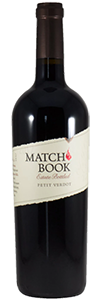Posted by Brent Modzelewski on April 18, 2021
How to Fix that Undrinkable Wine
Just Breathe...
Running so many virtual wine tastings, the Wine2Oh blog posts have been absent the last few months.
Virtual wine tastings have brought up an important aspect of wine tasting that is commonly overlooked or misunderstood, which is the inspiration for this blog post.
Doing virtual wine tastings does not lend well to the proper preparation of the tasting, since each participant is in control of their wine, wine glasses and environment.
Regardless of instructions given ahead of the tasting, you cannot ensure proper preparation of the wine nor the environment for the best tasting experience.
Although there are many aspects that make for a tasting successful, this post focuses on the aeration of red wines.
We host virtual wine tastings with 5 to 6 wines for up to 60 participants.
There is a wide range of wine knowledge with these participant groups and the wine tastings cover the entire spectrum of wine.
Needless to say, groups of this size will not properly prepare the wine for the tasting. Believe it or not, that is a good thing.
This sets up a beautiful way for self learning and experimentation with wine.
Read on to see why this is a great learning opportunity.
Let's All Breathe Together
Several of the recent virtual wine tastings held, have had that one unfortunate bottle of wine that was tight, unbalanced or lacked the expected complexity. Although this isn't always something that can be rectified, many times exposure to oxygen fixes this. But isn't oxygen bad for wine? As the saying goes "Keep your friends close, but your enemies closer". Oxygen is the enemy for storing wine. But oxygen is a good thing for when you are ready to drink the wine. Take decanting as an example. Wine is decanted for the primary purpose of oxygenating the wine. When you hear people say they are "letting the wine breathe", what they mean is they are exposing it to oxygen. That could include heavily swirling the wine in the glass. The exposure to oxygen lets undesired volatiles escape, softens tannins and brings out flavors that would be otherwise undetectable. Having the wine evolve with oxygen isn't a quick process and can take hours in a decanter. A decanter increases the surface area of the wine to help speed up the exposure to oxygen. In a previous blog post Essential Wine Tools), I discussed having a few critical wine tools. One of which is an aerator like the Vinturi Aerator. Using an aerator helps accelerate the oxygen exposure to the wine. If you have none of these tools, don't worry. You can still pour a glass of wine and let it sit for a few hours to have a similar effect.The Problem and The Fix
But what if you open a bottle and it tastes harsh. Or unbalanced. Or overly tannic. Is the bottle a loss? Do I dump it? The answer is a resounding NO. More often than not the wine can benefit from additional aeration. This is the exact issue that we have run into for several virtual wine tastings. People do not know the benefits of aeration, they forget to aerate or they are simply not patient enough to aerate. I think we all suffer from the latter, myself included. So what do we do with the bottle that we spent $30 or $40 on and poured two almost non-drinkable glasses of wine from it? First, don't panic. Next, we let the natural process of oxygenation let it do its magical transformation. Re-cork the bottle and let it sit at room temperature until the next day. I prefer to use a vacuum cork in the bottle to extract some of the oxygen to make the overnight process gentler. But the cork that came with the bottle will do just fine. Reopen the bottle the next day and taste the wine. You should see an improvement in aroma, flavor, softer tannins and lower perceived acidity. If the wine is still not at a drinkable level for your tastes, repeat for Day 3. I find Day 3 or Day 4 is the peak for a majority of wines when using a vacuum cork. Without a vacuum cork it will peak faster. After about Day 4 the wine starts its decline from too much oxygen exposure, so don't expect much improvement after that.
Wine Nerd Fact Information
Barrel Aging
We have all been taught that oxygen is the enemy of wine. Which is both true and untrue. When wine is aged in a barrel, the wine is exposed to oxygen through the oak's natural porosity and from in between the staves (slats of the wine barrel). Oxygen penetrates the wine very slowly during this process; the rate of exposure is different depending on the type of oak. French Oak has tighter grain resulting in a lower rate of exposure compared to American Oak with wider grain. Winemakers sample the wine from the barrel throughout the aging process which introduces more oxygen each time the barrel is opened and re-bunged ("re-corked"). The entire barrel aging process not only introduces aromas/flavors from the oak, but also matures the wine improving its tannins, acidity and overall balance.Wine2Oh Recommended Wine

Match Book Wine Company calls themselves "East of Napa. Left of Center". I couldn't agree more. They put out very approachable wines at sub $20 price points.
2017 Match Book
Petit Verdot
This Petit Verdot is no joke at 13.9% ABV coupled with a deep purple color with glorious black fruits and serious flavor intensity. Great directly from the bottle, but amazing with some decanting and even better the next day. This vintage is 88% Petit Verdot and 12% Petite Sirah so there should be no surprise on the depth of color and flavor. Super value at $17.
Disclaimers: We are not affiliated, sponsored or funded for this blog post. It is purely for the love of wine.
Copyright Great Meadow Products, LLC. All rights reserved.
